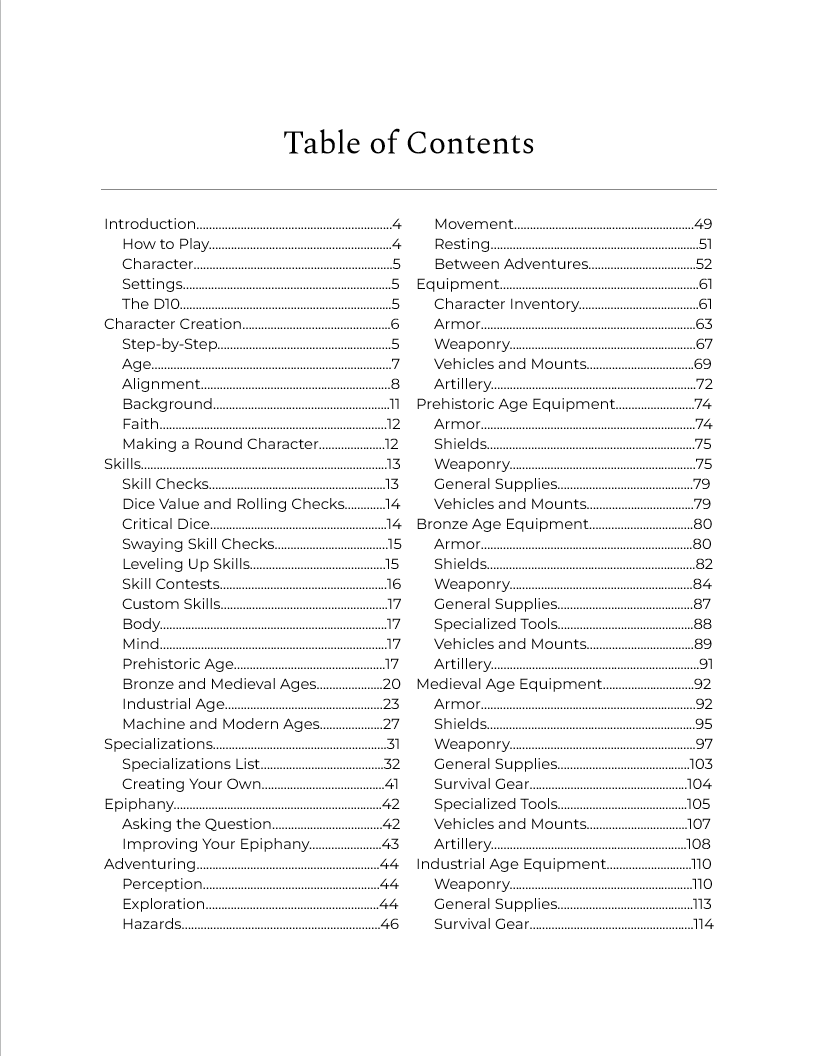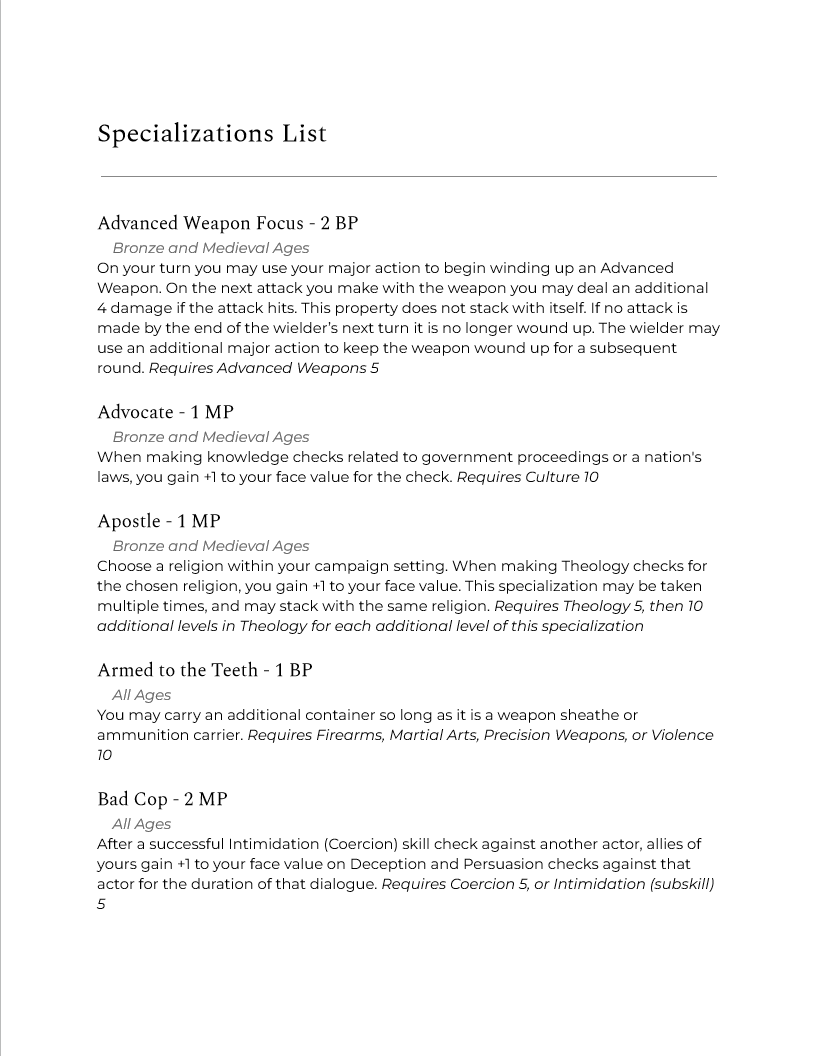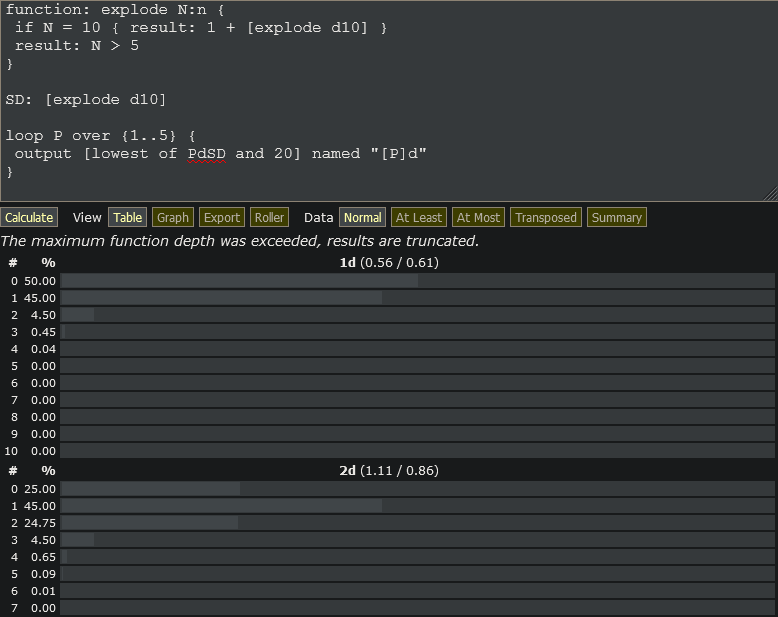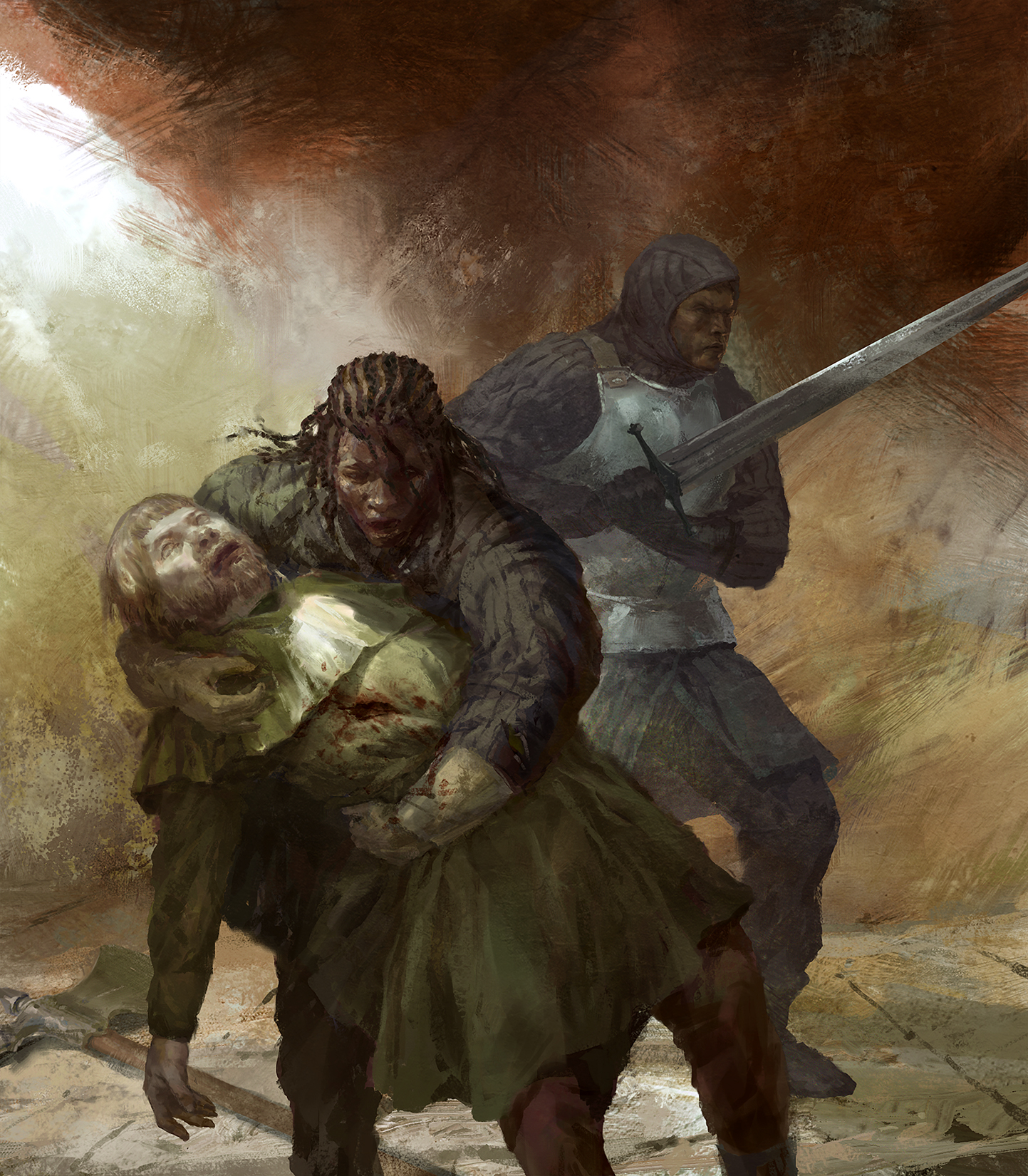What makes Resolut10ns different?
There are three pillars that provide the context to every part of Resolut10n's systems: Ubiquitous, lightweight, and story-first design.
The game's ubiquity is found in its default support for 6 distinct ages of time, expansions to stretch beyond reality, and an adaptable foundation to support settings of any genre of story. Including Prehistoric, Bronze, Medieval, Industrial, Machine, and Modern ages; each age defines a different set of skills, specializations, and equipment accessible to its characters. The rule's modularity and efficiency empowers the support for these stretches of time with ease, supplying a formula that players may easily follow to create settings of their own imagination. And for those who prefer to jump straight into the action, Resolut10ns supplies several setting books with expansive worlds already prepared for exploration.
While it is a priority for rules to remain lightweight, system depth is not something that passes our minds. A balance is struck in two sections of this pillar: First, systems must be interesting and rewarding enough to breed creativity and fun, but must be lightweight enough to keep the action moving. Second, the efficiency of systems is prioritized over their quantity in order to cover all common occurences among a variety of games without falling into overdesigning and rule bloat. The game's modularity empowers players to pick and choose what crosses the line for their group, however we aim to strike this balance even for groups that choose to use all of the provided rules. A majority of our test groups prefer to drop few to no systems yet report smoother gameplay than competing tabletop RPGs.
For many, the universal applicability of our rules is worthless without the ability to also support a variety of playstyles as well. The trend of combat-focused roleplaying games is by no means something to despise, and the ability to find variety and identity in combat is a necessary part of any RPG with combat. However with Resolut10n 's design philosophy,
we felt that under the endless labels of a character's race, class, subclass, hero level, etc, the actual identity of the character becomes buried and weightless. We took a different approach, with character creation options such as a detailed alignment wheel, skill allocation, and specializations; providing players the tools to create colorful and dynamic characters that develop through their journey. The nature of our approach to design employs characters to express themselves through their actions, as we provide rules for handling character knowledge, negotiation, stealth, adventuring, carousing, and more; in as great of
depth
as
we
devote
to
our
combat
.






